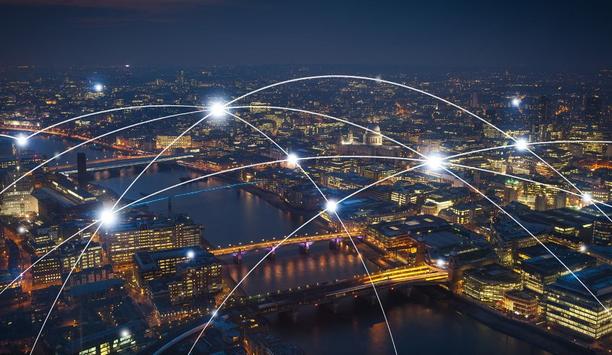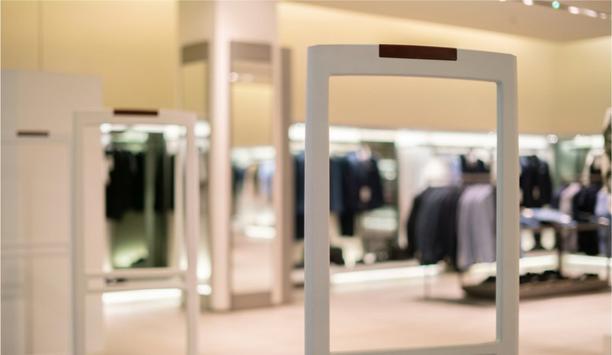Digital Barriers - Experts & Thought Leaders
Latest Digital Barriers news & announcements
The UK’s Security & Policing 2025 expo opened in Hampshire, bringing together government officials, law enforcement agencies and policing-tech vendors to discuss the latest developments in public safety and security. This year the event will focus on counter-terrorism, border security, cyber threats and the use of AI in policing. Tech companies to watch Thales will showcase its AI-driven border security solutions, which are designed to support identity verification processes at international checkpoints. The company has been involved in developing systems used in automated border control and passenger screening. NEC Corporation will present its facial recognition systems, which have been deployed in various public security settings. AI-based video technology Digital Barriers is a provider of AI-based video technology aimed at enhancing real-time decision-making The Japanese company’s technology has been used in airports, transport hubs and by law enforcement agencies for identification and verification purposes. Digital Barriers is a provider of AI-based video technology aimed at enhancing real-time decision-making for law enforcement, public safety and other critical sectors. The company’s secure edge platform and patented video compression tech are used across various industries including city law enforcement, defense, transportation and events, to provide instant insights from real-time video feeds. Facial recognition in UK policing The use of facial recognition technology by UK police continues to expand. A recent transparency report from Essex Police detailed the results of 38 deployments of live facial recognition. Over 383,000 match attempts were made using software from Corsight AI and Digital Barriers, with only one false alert recorded. During these operations, the system generated 61 alerts leading to 11 arrests, including suspects wanted for assault and sexual offenses. AI-driven surveillance tools Police statistics show that these tools help speed up studies and improve public safety The accuracy rate of the technology, according to the report, was 99.9997%. With rising crime rates and growing security concerns, facial recognition and AI-driven surveillance tools are becoming more widely adopted. Police statistics show that these tools help speed up investigations and improve public safety. Corsight AI will also present its advanced facial intelligence platform at Security & Policing 2025, showcasing its capabilities in real-time watchlist alerting and forensic investigations. Future of AI in crime prevention Corsight AI President Rob Watts commented on the growing demand for AI-driven policing solutions: "In many regions, we are witnessing an increase in violent crime and various threats to personal safety. This directly fuels the demand for effective and efficient law enforcement, often including the implementation of facial intelligence tech for real-time watchlist alerting and after-the-fact forensic investigations." "If you're a Western police force needing to reliably identify people in real-world conditions like outdoor darkness and in motion, you have very few options." Security & Policing 2025 will provide a platform to explore these issues further, as law enforcement agencies and tech providers look at the future of AI in crime prevention and public security.
The deployment of new Live Facial Recognition technology by Essex Police resulted in three arrests at the Clacton Airshow on August 22 and two additional arrests in Southend on August 25 and 26, including for sexual assault and common assault cases. Live Facial Recognition technology The technology, provided by Corsight AI and Digital Barriers, identified individuals wanted for serious offenses, enforced orders against those on a ‘watch list,’ and protected vulnerable individuals at risk of harm. Images of individuals not on the watch list were deleted almost instantly, ensuring no data retention or storage. Keeping people safe Assistant Chief Constable Andy Pritchard stated, “We’re an innovative and forward-thinking force, utilising new technology to keep people safe and deter crime." "Our Live Facial Recognition technology is used to locate people we want to speak to in connection with ongoing investigations and to manage people with court orders or conditions. Criminals cannot think they can walk around our communities without being caught.” Real-time recognition The technology enables Essex Police to recognise faces in real-time and during retrospective investigations The technology, developed through a collaboration between Digital Barriers and Corsight AI, enables Essex Police to recognise faces in real-time and during retrospective investigations. Digital Barriers, known for its patented AI-based video codec and secure edge platform, specialises in delivering live cellular video solutions, including in military operations in Afghanistan, securing royal and presidential events, and the Olympics. AI-based video codec Defence & Government Director at Digital Barriers, explained, “Real-time facial recognition from security cameras, vehicle-mounted cameras, and body cameras is a challenge that very few technologies can perform reliably." "Digital Barriers provides a reliable video stream, and Corsight AI was chosen for its high reliability in challenging conditions such as poor video quality, limited camera angles, darkness, extreme weather, and disguises.” Safety and security Tony Porter, Corsight AI’s Chief Privacy Officer and former UK Surveillance Camera Commissioner added, “Drawing on our vast experience with law enforcement agencies worldwide, Essex Police adhere to the highest standards of fair use and transparency.” Rob Watts, President of Corsight AI, said, “It is a privilege for Corsight AI to contribute to the safety and security of the law-abiding people of Essex.”
Corsight AI's facial intelligence technology, in collaboration with Digital Barriers, has enabled Essex Police to recognise faces both in real-time and during retrospective investigations. Digital Barriers, known for its patented AI-based video codec and secure edge platform, specialises in delivering live cellular video solutions for a range of scenarios, including military operations in Afghanistan, securing royal and presidential events, and the Olympics. Facial intelligence technology To ensure privacy, images of people not on the watch list have been deleted almost now, with no data retention or storage The deployment of facial intelligence technology led Essex Police to make three arrests at the Clacton Airshow on August 22 and two additional arrests in Southend on August 25 and 26. These arrests were related to serious offences, including sexual assault. The technology, provided by Corsight AI and Digital Barriers, not only identified individuals wanted for serious crimes but also enforced orders against those on a watch list and protected vulnerable individuals at risk of harm. To ensure privacy, images of individuals not on the watch list were deleted almost instantly, with no data retention or storage. Utilising new technology Assistant Chief Constable Andy Pritchard stated, “We’re an innovative and forward-thinking force, utilising new technology to keep people safe and deter crime. Our live facial recognition technology is used to locate people we want to speak to in connection with ongoing investigations and to manage people with court orders or conditions. Criminals cannot think they can walk around our communities without being caught.” Neil Hendry, Defence & Government Director at Digital Barriers, explained: “Real-time facial recognition from security cameras, vehicle-mounted cameras, and body cameras is a challenge that very few technologies can perform reliably. Digital Barriers provides a reliable video stream, and Corsight AI was chosen for its high reliability in challenging conditions such as poor video quality, limited camera angles, darkness, extreme weather, and disguises.” Safety and security Tony Porter, Corsight AI’s Chief Privacy Officer and former UK Surveillance Camera Commissioner, added: “Drawing on our vast experience with law enforcement agencies worldwide, Essex Police adhere to the highest standards of fair use and transparency.” Rob Watts, President of Corsight AI, said: “It is a privilege for Corsight AI to contribute to the safety and security of the law-abiding people of Essex.”
Insights & Opinions from thought leaders at Digital Barriers
The UK government recently announced a doubling of the Safer Streets Fund to £45 million, as it seeks to reassure the public that safety is a top priority, as the night-time economy makes a return. More than just surveillance While this funding increase is much needed, it’s vital that the government and local councils use the money strategically, or risk missing out on a great opportunity to deliver real change and enhance safety across the United Kingdom. One of the main strategies cited by the government is to increase the current vast number of CCTV cameras installed across the country, despite the fact that the UK is already one of the most surveilled nations in the world. Investing in video analytics London alone has around 700,000 cameras, but to effectively monitor them all would be an incredibly inefficient use of manpower and require a huge number of staff. Therefore, I believe the clearest and most cost-effective way for this project to succeed in its overall mission, is by investing in smarter technology, such as video analytics. Incorporating video analytics into existing infrastructure is the clear solution This technology offers a more efficient use of resources, faster response times and enables more informed, time-critical decision making, when reacting to unfolding events in real time. Incorporating video analytics into existing infrastructure is the clear solution, as the technology enables legacy assets, such as analogue CCTV cameras, to become more than just after the fact evidence gathering tools and instead be used to help enhance real-time responses to unfolding incidents. Artificial intelligence-enabled solutions Artificial intelligence-enabled solutions are trained using vast datasets of images and video footage, in order to better understand people, objects and vehicles that are captured on film, and they continue ‘learning’ and improving, while in use. The system’s algorithms analyse and prioritise input from video data to decide which inputs are of value, automatically classifying the footage and notifying security personnel accordingly. This reduces response times by notifying CCTV operators of an incident, as it happens, meaning law enforcement and security personnel can react faster and intervene in an ongoing situation. Edge technology and real-time video streaming A key consideration should be choosing a technology that can operate at the edge and deliver real-time video streaming, even at the lowest bandwidths, so it isn’t limited to use in areas with good connectivity, which would exclude most remote areas. Quality really does matter and technology that can operate over low bandwidths is crucial for allowing operators to zoom in on areas of interest, such as a car number plate or face, and retrieve full-resolution images that can make a real difference in ongoing investigations. Analytics-based security approach Introducing an analytics-based security approach would also help curtail the rising cost of tackling crime Introducing an analytics-based security approach would also help curtail the rising cost of tackling crime. Research conducted by the UK’s Labour Party recently found that the annual cost of crime reached a staggering £100 billion. While statistics show that crime rates in general have been fairly stable over recent years, experts point to the increase in specific types of violent crime, such as knife crime which rose by over 20% during 2020. Implementing smart analytics-based technology Implementing smart analytics-based technology would help maintain staffing costs, as the system can identify incidents without an operator’s input, as well as reducing the cost of managing crime, as more incidents will be intervened in before they escalate too far. This dramatically reduces the burden on staff and allows a single surveillance operator to monitor many more cameras. On the other hand, this level of automation also reduces false alarm fatigue and operator overload, which can quickly sap efficiencies and reduce operator alertness, if left unchecked. Data driven problem-solving approach to crime prevention Procurement officials should avoid the common mistake of simply doubling down and throwing more staff and security assets at the problem to bring results. Instead, they should take a more data driven problem-solving approach to crime prevention by leveraging technologies that can enhance response and preserve their existing investments in cameras. The smart use of real-time video analytics could make the difference by preventing dangerous situations from escalating into serious incidents.
Supermarket employees have been the hidden key workers of the past year, keeping shelves stocked and queues under control as panic buying gripped the nation. As a result of being expected to enforce face covering and social distancing regulations, they also been asked to act as de-facto security guards alongside their existing duties. This is problematic as many employees have never had to deal with this kind of responsibility before, let alone received any conflict de-escalation training. In order to maintain the safety and security of their staff retailers must take additional steps to uphold their duty of care, with the NPCC recently specifying that it is the responsibility of retailers ‘to manage entry to their stores and compliance with the law while customers are inside’. Supermarkets in particular need to be aware of this requirement, as the big four recently announced that their employees would now be challenging customers shopping in groups and those not wearing masks. Verbal abuse from the public Crime against retail employees has already been a major issue over the course of the pandemic, confirmed by research from the Union of Shop, Distributive and Allied Workers that found 90% of retail staff in the UK experienced verbal abuse last year. The Co-op has recently been vocal about the effects of the pandemic and lockdown-related frustrations on its employees.90% of retail staff in the UK experienced verbal abuse last year The supermarket reported a 140% increase in crime within its stores over the past year, with many of the 200,000 cases related to verbal and physical abuse experienced by employees. Jo Whitfield, Co-op Food chief executive, confirmed that the number of issues has already increased drastically as a result of staff enforcing COVID-secure guidelines. So, what steps must retailers take to ensure their duty of care remains intact as employees take on new enforcement responsibilities? Introducing real-time surveillance technology to support security guards and shop floor employees alike is vital. Bolstering front line defences Security guards posted at supermarket entrances are the first line of defence against shoppers determined to break the rules. However, they are now being pulled in multiple directions with queues to monitor and occupancy to manually keep track of, along with the usual security alarms to respond to. With one person usually posted at the entrance at any one time it’s simply impossible to have eyes everywhere, which is where automated video surveillance comes in. COVID-specific technologies, such as mask detection and occupancy management systems, are now the golden bullet to retail safety and security.Mask detection and occupancy management surveillance tools can automatically alert a shopper Mask detection and occupancy management surveillance tools can automatically alert a shopper whether or not they are allowed to enter the store on their approach to the door. The system surveys the person and a screen will automatically display different instructions depending on the situation: whether they must put a mask on before they enter, wait until capacity is low enough to enable social distancing or, if the previous criteria are fulfilled, that they are free to enter. COVID-secure safety This stand-off technology minimises the need for contact between security personnel and shoppers, allowing security guards to complete their usual duties, safe in the knowledge that the store is being managed in a COVID-secure way. With a hands-off approach enabled by surveillance technology, the potential for tense confrontation is greatly diminished as customers will usually comply to the reminder shown to them and put on a mask or wait without further prompting from staff. With security personnel able to better focus their attention on the stubborn rule-breakers,It is crucial that retailers choose a solution embedded in real-time connectivity this responsibility will no longer land with staff on the shop floor who are often ill-equipped to deal with this situation. It is crucial that retailers choose a solution embedded in real-time connectivity that will allow all store entrances to be screened simultaneously. Nobody can be in multiple places at once, but this connectivity allows alerts to be streamed instantly to any connected device that can be monitored by just one employee, meaning they can review the alerts that require their attention without needing to be physically present or re-tasked away from their day-to-day duties. Instant reassurance with body worn tech As a customer-facing role, there can be no guarantee that shop workers will never experience a potentially violent confrontation with a customer, which is where the presence of live streaming body worn cameras can help. While they may not always be trained to de-escalate a risky situation, being able to discreetly call for assistance can provide the reassurance employees need to feel safe and supported at all times. If an employee asks a customer to put a mask on while they’re in the store or step back from another shopper and the situation turns abusive – verbally or physically – a live streaming-enabled body worn camera can be triggered to stream a live audio and video feed back to a central control room manned by trained security personnel.A live streaming-enabled body worn camera can be triggered This real-time footage gives security staff exceptional situational awareness, allowing them to fully assess the situation and decide on the best course of action to support the employee in distress, whether that is going to the scene to diffuse the situation or contacting the police in more serious circumstances. Bolstering front line security This goes one step further than record-only body worn cameras, the capabilities of which these next generation devices match and exceed. Record-only cameras are well-suited to provide after-the-fact evidence if a customer interaction turns sour, but they do little to provide reassurance to out of depth employees in the moment. The duty of care grocery retailers must provide to their employees has never been more important, with staff taking on new mask and social distancing enforcement responsibilities and managing interactions with frustrated customers. Bolstering front line security and giving staff extra reassurances with the introduction of real-time video surveillance technology is a crucial step for retailers striving to keep employees and shoppers safe during these challenging times.
This year has been characterised by uncertainty and extraordinary strain, which has fallen heavily on all manner of key workers. Alongside our celebrated healthcare professionals, carers and the emergency services, those working in essential retail have proved themselves to be the backbone of our society during this challenging period. As people try to grasp onto normality and cope with the unexpected changes taking place in every aspect of their lives – including the way they are allowed to shop – it’s no surprise that tensions are now running higher than ever. Retail crime was already on the rise before the pandemic struck, with the British Retail Consortium finding that at least 424 violent or abusive incidents were reported every day last year. The Co-op recently reported its worst week in history in terms of abuse and antisocial behaviour, with 990 incidents of antisocial behaviour and verbal abuse suffered by staff between 20th and 26th July. 990 incidents of antisocial behaviour and verbal abuse suffered by staff between 20th and 26th July To manage the increased risks currently faced by retail employees, businesses must adopt new initiatives to safeguard their staff. Growing numbers of retailers including the Co-op and Asda have equipped their in-store and delivery staff with body worn cameras to enhance safety and provide them with peace of mind, as well as to discourage altercations from taking place at all. Traditional tech Body worn cameras are nothing new and have been used within the law enforcement industry for years. Traditional devices are record-only and can be used to record video evidence able to be drawn upon ‘after the fact’ should it be needed as an objective view of an event and who was involved. These devices can also be used to discourage violent or verbally abusive incidents from occurring in the first place. If a customer is approached by an employee, they are likely to think twice about retaliating if they know their interaction is being recorded. This stance is supported by research from the University of Cambridge that found the use of body worn cameras improves the behaviour of the wearer and those in its vicinity, as both are aware of the fact it can act as an objective ‘digital witness’ to the situation. However, record-only body worn cameras do leave much to be desired. In fact, the same University of Cambridge study found that, in the case of law enforcement, assaults against officers wearing these devices actually increased by 15%. This could be attributed to those being recorded being provoked by the presence of the camera or wanting to destroy any evidence it may hold. Out with the old, in with the new Live-streaming enabled body worn cameras provide the benefits of record-only devices and more Fortunately, there is a better option. Live-streaming enabled body worn cameras provide the benefits of record-only devices and more. Live-streaming capabilities are able to take ‘after the fact’ evidence one step further and provide the wearer with ‘in the moment’ safety and reassurance. With these devices, if a retail employee is subject to a volatile situation with a customer, they can trigger live video to be streamed back to a central command and control room where security officers will be able to take the most appropriate course of action with heightened and real-time situational awareness. Having access to all of the information they could need instantly will enable security personnel to decide whether to attend the scene and diffuse the situation themselves or to take more drastic action if needed, before any harm has been caused. This capability is especially valuable for lone workers who don’t have access to instant support – such as delivery drivers, in-store or warehouse staff and distribution operators to name a few. The pandemic has also doubled the number of consumers who do their regular grocery shopping online, leading to potential supply and demand issues resulting in unhappy customers. Live-streaming body worn cameras rely on uninterrupted mobile connectivity to excel, as they are not connected to any physical infrastructure. To minimise the risk of the live video stream buffering or freezing – a real possibility for delivery drivers who can be working anywhere in the country – retailers should look to deploy devices capable of streaming in real-time, with near zero latency footage, even when streaming over poor or constrained networks. To get the most out of their tech, retailers should also look to implement devices that can be multi-use and can be deployed as a body worn camera or a dashcam to record any incidents that may occur whilst driving. Novel threats This year brought about a new threat that retailers must protect their staff from While not to the same extent, retail workers have always been subject to a level of potential physical or verbal abuse. However, this year brought about a new threat that retailers must protect their staff from. The COVID-19 pandemic has been the cause of many of the new threats facing employees, but is also a threat in itself. To mitigate this, retailers should look to introduce remote elevated temperature detection cameras in their stores, which analyse body temperature and sound an alarm when somebody’s temperature exceeds a certain threshold – as this could indicate the presence of a potential fever. When deployed on the same cellular network as live-streaming enabled body cameras, these tools can be linked to a central command centre and the alarms viewed remotely from any connected device. This means a network of cameras can be monitored efficiently from a single platform. Ensuring the protection and security of retail workers has come to the fore this year. With the risk of infection in high-footfall locations, such as supermarkets, and the added pressure that comes with monitoring and enforcing safety guidelines, retail staff are having to cope with a plethora of new challenges. Retailers should adopt innovative technologies within their stores and delivery trucks, such as live-streaming enabled body cameras and remote elevated temperature screening solutions, to minimise the threat faced by their employees and provide them with instant support and reassurance should it be required.
Using artificial intelligence (AI) to automate physical security systems
DownloadA modern guide to data loss prevention
Download7 proven solutions for law enforcement key control and asset management
DownloadThe truth behind 9 mobile access myths
DownloadAccess control system planning phase 2
Download

























